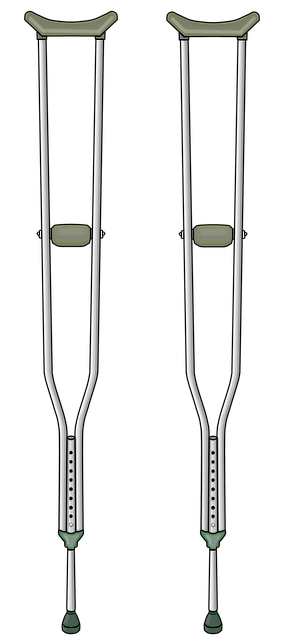PRP therapy for joint pain is a groundbreaking, non-invasive approach leveraging the body's natural healing powers. By concentrating growth factors from platelets in a patient's blood, this treatment accelerates tissue repair and reduces inflammation for conditions like arthritis, tendonitis, and sprains. When combined with physical therapy, PRP offers personalized care that strengthens muscles, improves flexibility, and restores joint range of motion, providing holistic relief from chronic or acute joint pain. Clinical studies demonstrate significant improvements in pain levels, mobility, and overall joint health, making this method a game-changer in managing joint pain effectively.
“Discover the transformative power of combining PRP (Platelet-Rich Plasma) therapy with physical therapy for effective joint pain relief. This innovative approach integrates cutting-edge science and traditional healing methods. Understanding PRP’s role in stimulating natural regeneration, combined with tailored physical exercises, offers a comprehensive solution for various joint conditions. Explore the scientific backing, potential benefits, and inspiring success stories that highlight PRP therapy’s effectiveness in managing chronic joint pain.”
Understanding PRP Therapy and Its Role in Joint Pain Relief
PRP therapy, or Platelet-Rich Plasma Therapy, is a cutting-edge approach that harnesses the body’s natural healing mechanisms to alleviate joint pain and promote tissue repair. By taking a small sample of your blood and processing it to concentrate platelets rich in growth factors, PRP therapy accelerates the body’s ability to heal damaged joints and soft tissues. These growth factors stimulate cellular regeneration, enhancing the body’s natural response to injury or inflammation.
This innovative treatment has gained traction as an effective solution for various joint pain conditions, including arthritis, tendonitis, and sprains. By injecting concentrated PRP directly into the affected area, therapists can target specific sites of pain and inflammation, providing rapid relief and accelerating recovery. The role of PRP therapy in physical therapy is significant, offering a non-invasive, natural alternative to traditional treatments, with promising outcomes for managing chronic joint discomfort.
Physical Therapy: A Complementary Approach to Healing
Physical therapy is a crucial complementary approach in the healing process, especially when combined with Platelet-Rich Plasma (PRP) therapy for joint pain. This therapeutic method focuses on restoring function, improving mobility, and alleviating pain through various techniques such as exercise, manipulation, and education. Physiotherapists tailor treatments to individual needs, targeting specific joints or muscle groups affected by injury or disease.
In the context of PRP therapy for joint pain, physical therapy plays a pivotal role in enhancing the healing process. While PRP accelerates tissue repair and regeneration, physical therapy ensures optimal recovery by strengthening muscles, improving flexibility, and restoring joint range of motion. This collaborative approach offers patients a holistic solution, combining advanced medical treatments with personalized care to achieve long-lasting relief from chronic or acute joint pain.
The Science Behind PRP's Effectiveness in Treating Joint Conditions
The science behind PRP’s effectiveness in treating joint conditions is multifaceted and promising. Platelet-Rich Plasma (PRP) therapy leverages the body’s natural healing mechanisms by concentrating platelets, which are rich in growth factors, into a small volume of plasma. These growth factors play a pivotal role in stimulating tissue repair and regeneration, making PRP therapy an attractive option for managing joint pain and related conditions. Research has shown that PRP can accelerate the healing process of damaged articular cartilage, tendons, and ligaments, thereby reducing inflammation and improving joint function.
PRP therapy for joint pain has gained traction due to its ability to provide targeted, natural treatment options. Unlike many synthetic medications or injections, PRP uses the patient’s own blood components, reducing the risk of adverse reactions. This personalized approach ensures that the body recognizes and accepts the injected PRP, fostering a more effective healing response. Numerous clinical studies have demonstrated significant improvements in pain levels, mobility, and overall joint health among patients undergoing PRP therapy for conditions such as arthritis, tendonitis, and ligament sprains, making it a game-changer in physical therapy protocols.
Potential Benefits and Real-World Success Stories of Combined PRP and PT Treatment
The combination of Platelet-Rich Plasma (PRP) therapy and physical therapy (PT) offers a promising approach to managing joint pain and enhancing overall mobility. PRP therapy for joint pain has gained significant attention due to its potential benefits, which include accelerated healing, reduced inflammation, and improved tissue regeneration. By injecting concentrated platelets rich in growth factors directly into the affected area, PRP stimulates the body’s natural repair mechanisms, fostering a more rapid and effective recovery.
Real-world success stories further validate this combined treatment approach. Many patients with conditions such as tendon injuries, ligament sprains, and osteoarthritis have reported substantial improvements after undergoing PRP and PT sessions. For instance, professional athletes have benefited from faster recovery times and enhanced performance, while older adults have experienced significant relief from chronic joint pain, allowing them to regain mobility and independence. These positive outcomes highlight the synergy between PRP’s ability to promote tissue repair and physical therapy’s role in strengthening muscles and improving range of motion.
PRP therapy, when combined with physical therapy, offers a powerful approach to managing joint pain. By harnessing the body’s natural healing mechanisms, this dual-pronged strategy not only provides relief but also promotes long-term joint health. The scientific evidence supporting its effectiveness is compelling, with numerous success stories showcasing its potential in treating various joint conditions. As PRP continues to evolve as a medical treatment, its integration with physical therapy presents a promising pathway for individuals seeking lasting solutions to joint pain and improved mobility.
